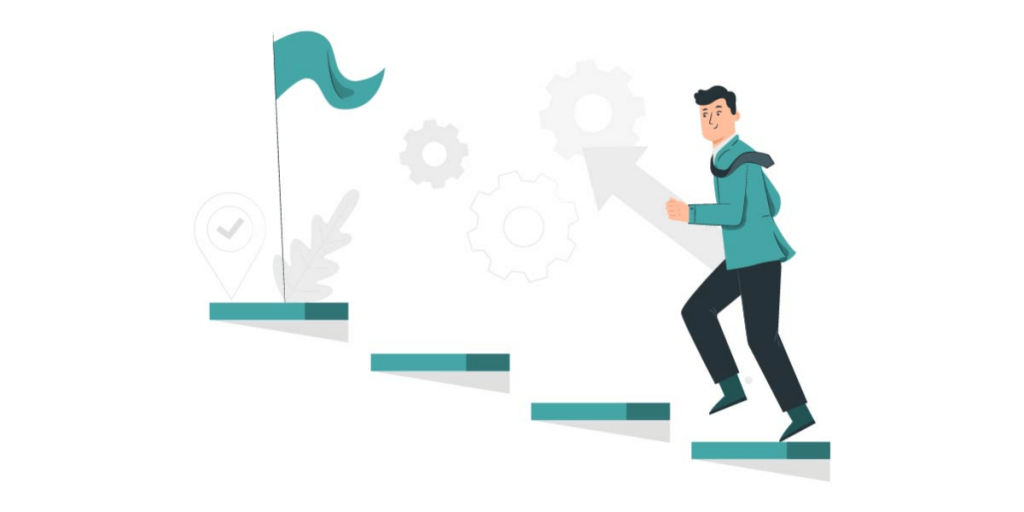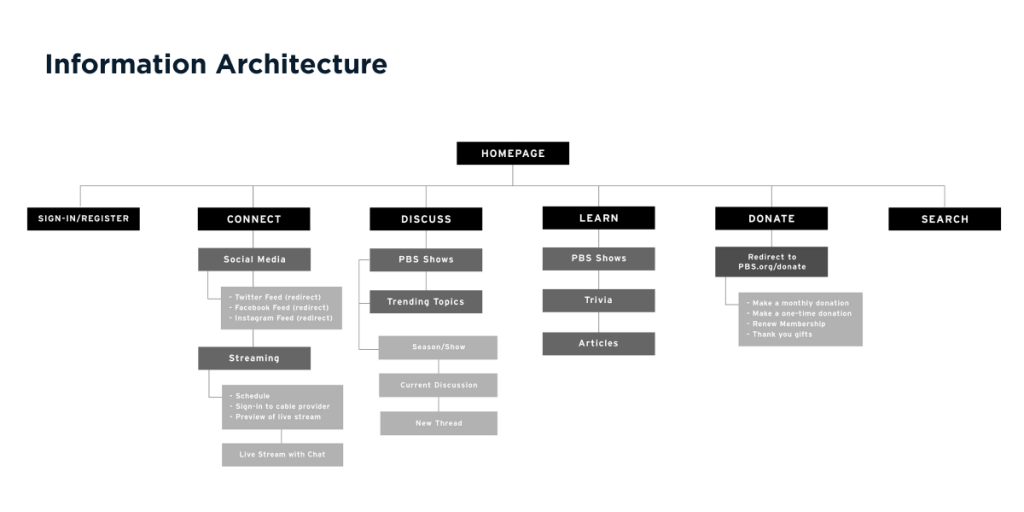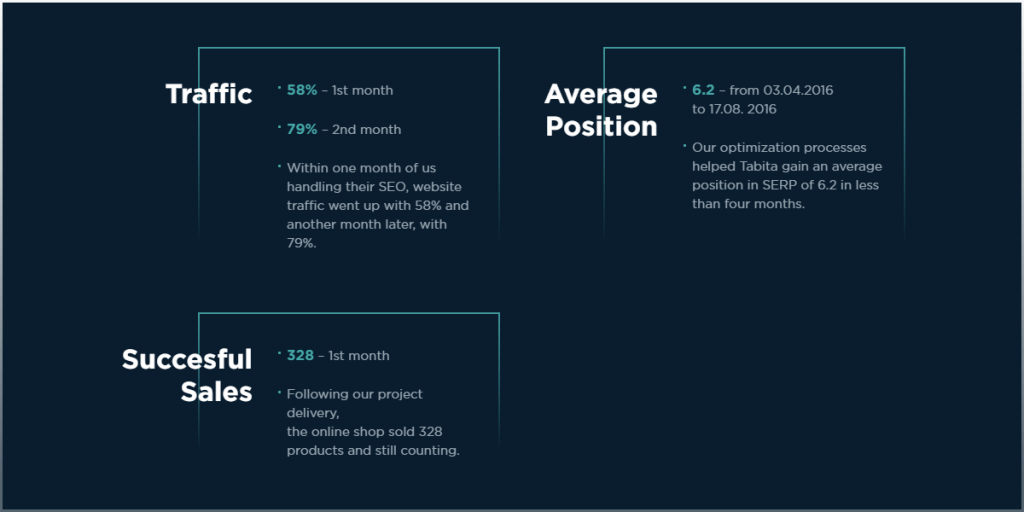Top 5 Things to Pay Attention to When Choosing Custom eCommerce Development
With online sales growing fast year-on-year, retailers must have the right eCommerce development solutions to build their strategies. With so many options in terms of eCommerce platforms today, it is very difficult for business owners to make the right decision. From functionality, appearance, to navigation, coding integrity and more, a lot of effort goes into building the most suited, eye-candy, user-friendly website. Custom eCommerce development will definitely put you on top of your competition and will differentiate your business from the others no matter if you have a B2B or a B2C business model.
What is Custom eCommerce Development?

Custom eCommerce development is a digital software product designed to accommodate your unique business model. This tailor-made platform helps you offer the best user experience through an eye-catching design that incorporates all the functionalities and integrations that you need to offer a smooth, flawless and intuitive navigation, and outstanding overall user interaction. Besides, you have the option to customize your website design, buttons, fonts, content and everything else in between, to fit your customer’s expectations. A custom eCommerce CMS (content management system) will include features such as online payment, order management, mobile-friendliness, analytics, and other characteristics to help you achieve your business goals. Simply put, you have the authority to add and remove any features or integrations to create the perfect eCommerce website that appeals the most to your target audience, represents your brand, and displays exactly how you want it. Moreover, you have the full control of it and in the end, it belongs only to you.
The Benefits of a Custom eCommerce Platform
In today’s market, if you want to succeed, you need to stand out from the crowd. Just an ordinary eCommerce website won’t help you achieve your goals. By choosing a custom eCommerce development solution for your business has a multitude of advantages. You can surely go with already built and popular eCommerce platforms such as Shopify, Woocommerce, or Bigcommerce, but the downside is that you will be just another faded retailer on the market, with limitations in terms of technology, features, UX (user experience), UI (user interface), SEO (search engine optimization), and integrations.
We have created a list with the benefits of a custom eCommerce solution:
- It is created to fit only your business model;
- It is adapted to all your business needs and goals;
- It is unique: the design, navigation, content, etc. all the aspects are reflecting your brand, values, and image;
- You can incorporate only the features you want and you can expand them in the future, as your business evolves;
- The solution can be developed on any software language and infrastructure you want;
- You are the complete owner of the platform;
- You will benefit from better website security;
- Any changes will be implemented fast;
- Your website is going to be mobile-friendly;
- You will benefit from better SEO and higher rankings;
- Digital marketing actions and online paid campaigns will bring better results;
- You will stand out from the crowd, you will be different from your competitors, and you will be more recognizable on the market.
Top 5 Things to Pay Attention When Choosing Custom eCommerce Development
After you decided upon a custom eCommerce solution for your business, your work is not done yet. Even with the best eCommerce solution on the market, you need to plan and strategize with the development agency, to ensure the growth of your company.
The best way to approach your new eCommerce business project is to start by making a plan yourself and discuss it with the development agency before starting working on it. We consider this to be an excellent step to be done first, as you know your business better than anyone. This way, the agency can understand your needs and develop the right solution for you from the start.
We created a list with the top 5 things to pay attention to when choosing how to build your online shop. See below the factors to focus on before the development process:
1. Align Your Custom Development With Your Business Goals

First and foremost it is important for you, as a business owner, to understand and have clear business goals. In this stage, it is important to understand your business niche, especially if you want to be present on a global level. But before expanding globally, if it is the case, you also need to explore your target market such as applicable taxes, shipping costs, excise duties, compliance to local and international trade practices. The next important thing to know is your target audience. We strongly believe that knowing your customers’ profiles before starting selling your products is not only necessary but mandatory. We recommend you to segment your customers based on demographics, educational background, things they like and dislike, shopping habits, online behaviour, spending power, etc. By understanding your users, you will be able to identify what you need to deliver to meet their needs and expectations. We are talking about key website features, website functionalities, integrations, UX/UI design, content, promotions, and so on. Last, but not least, is to create a list of features and customizations for your new eCommerce software. You can conduct meetings and brainstorming sessions with different departments in your company, read and analyze user reviews, take surveys, read industry articles, and more. Creating a detailed list of features, functionalities, and customizations will give you the direction to build your eCommerce website.
2. Know Your Competition And Stand Out From The Crowd

In today’s consumers market, the most successful online stores, are the ones that make a difference. This is why we consider research the key ingredient for business prosperity. Competition analysis is one of the most important steps to be accomplished when looking to build a new solution or migrating to a different one. By conducting a competitive analysis you will get useful insights that will help you make strategic business moves and technology decisions. We suggest you start by identifying your key competitors. Your competitors are the companies that operate in your geographic area and sell the same products and services as you do. Use popular keywords on search engines such as Google, Yahoo, and Bing to find who is ranking against you. We recommend doing this regularly. Next, you will need to identify the technologies your competitors use. Here, you need to focus on web hosting providers and technologies your competitors use on their sites. You can use online tools such as Wappalyzer and Builtwith to see statistics about the technologies used on a website. This can also help you identify useful techniques that are currently missing from your website. Now it is time to compare the features and functionalities of your competitor’s sites. This is useful if you are a new eCommerce business that getting ready to launch, you are switching to a new eCommerce solution, or you are rethinking your new site.
For you to step out of the crowd and be a step ahead of your competition is to make knowledgeable decisions based on what is happening in the market and what your competitors are doing.
3. Setting Up Project Requirements

After you’ve done all the research, it is time to define the requirements of your project. Now you have to determine what features and functionalities, third party integrations, and customizations, need to be done in the development phase. Start by documenting a features list based on the findings from the earlier steps. Before meeting the web development agency you decided to work with, list all the features and functionalities you want to be implemented in your new design and prioritize them to be implemented in different development phases. Decide upon a must-have features list and nice-to-have features for the overall project purpose. Make a list for third-party integrations as well, to avoid any compatibility or functionality issues in a later stage of the development. Also, identify the extensions and customizations for your reliable and effective solution. When you transition to a new solution you must determine your SEO plan. Include aspects such as 301 redirects, tagging, URL optimization, navigational hierarchy, internal linking, and keyword analysis. We recommend you, in this phase, to define roles and responsibilities of your internal team, such as the point of contact for technical decisions, the person who will be in charge of the design, development, and QA review, data import, etc. In the project requirements step, you should set a realistic timeline and budget.
4. Decide Upon Data Migration and Solutions

In case your business already has an eCommerce platform and you want to migrate to a different one, data migration needs a lot of effort and should be done right to ensure the success of your migration strategy. Therefore, we suggest you start by identifying the data that needs to be migrated such as the catalogue, customer data, users accounts, usernames and passwords, addresses, email addresses, order history, customer reviews, promotions, coupons, etc. Relevant for businesses that are transitioning to a new eCommerce platform is to focus on SEO and site structure. This approach will give you an overview of where you stand now and avoid any issues on the new solution. You will be able to see how much you improved and identify new improvements. How we usually act in these situations and we recommend you to do the same, is to perform an SEO analysis first, to see the search engine optimization status of your existing website. You should include the current keywords list and look for improving it, the top keywords and landing pages that generate the most revenue, review the current site ranking and how to achieve a better one through the new platform, keep an inventory of your current links and analyze them, set up Google Analytics and Google Search Console for your new site to track the progress. Other aspects that need your attention are the navigation and sitemap for an overall information architecture of your site. Record your website’s categories, sub-categories, product or service pages, blog article pages, sitemap, layout, and so on. This will help you understand your site, what your visitors prefer, and do not make significant changes that can confuse your audience. List down your third-party integrations to make sure that they work with your new eCommerce solution. Keep in mind that changing too much your new website from the old one in terms of architecture, order processing system, or other processes, might bring drastic changes in customer behaviour and shopping patterns. Make small changes in the first phase, implement them, and take it from there.
When it comes to the custom eCommerce solution, you can opt for an open-source like Magento, which is highly customizable, but you can also decide upon a programming language and have a platform made from scratch. Both choices require experienced developers to implement effective solutions and maintain them.
5. Digital Marketing Implementations

Online businesses depend on their digital marketing efforts to succeed and to be a recognizable brand. Firstly, we recommend you to consider the mobile capabilities of your new eCommerce solution. Being able to sell on mobile devices is a must, as user behaviour is very focused on mobile usage. You have three solutions to choose from: responsive design, dynamic serving, or dedicated mobile site. We wrote an article where we compare the pros and cons of each solution for mobile responsiveness that might help you. Pay attention to page layouts, workflow notifications, and trigger messages on your mobile optimised website.
Your new eCommerce solution is not complete without marketing efforts for reaching your users. Here we are talking about search engine optimization, social media, paid advertising, affiliate marketing, link building, and other techniques to drive your audience to your website. Therefore, make sure you build effective digital marketing capabilities such as web analytics, social media integrations, SEO and PPC.
When we talk about web analytics, we refer to keeping track of user behaviour. Without these tools, you cannot gain knowledge of what is happening on your website, which pages are top-performing, how clients use your site, and you cannot make any improvements on user experience. As mentioned before, make sure you have Google Analytics and Google Search Console accounts. You can also use Hotjar to map out how users navigate your site and adjust it for conversion rate optimization.
SEO and PPC capabilities are helping you improve your visibility and overall online presence. Search engine optimization strategy and activities will drive organic (unpaid) traffic to your website and will keep you ahead of your competition by ranking higher in search engine rankings. A strong PPC (pay-per-click) campaign will help you advertise and sell online. The difference between them is that SEO is done to improve your organic search rankings and PPC is the paid campaign that runs online to attract visitors.
Social Media Integration is a powerful way to promote your business to your target users. Implementing Social Media capabilities on your eCommerce platform will allow you to share your products and services across multiple channels such as YouTube, Facebook, Twitter, Instagram, etc. People use social media not only to shop online but also to talk and review products and brands. They share their opinion about their shopping experience, recommend products to their friends and followers, and make shopping decisions based on other user’s experience with a service, product, or brand. Social media tools will ease customer’s work to share your products or services, review the goods, and recommend them to others.
Why Choose Flowmatters for your Custom eCommerce Development?
We are a full-service digital agency that focuses on custom eCommerce development of content management systems (CMS), custom development of client relationship management systems (CRM), mobile solutions and PWA (progressive web apps), and digital marketing solutions. What makes us different is that we do not treat a client’s project as an ordinary task, we create long-term and fruitful partnerships. We like to invest our best skills and knowledge to create outstanding, successful, and high-performance products that exceed expectations. For each project, we have a dedicated development team of back-end developers and front-end developers that work with different technologies such as PHP, Zend Framework, Magento, MySQL, Javascript, Vue JS, and many more. Besides, we allocate a team of designers that focuses on UX and UI to create a clean design that attracts, engages, and converts shoppers. The marketing team will focus on a rock-solid SEO strategy, will write content based on user intent including high performing keywords, will put together an eCommerce blog strategy and social media marketing plan to make sure the final results are maximized. The QA specialist will make sure that every implementation is working properly, and the project manager will make sure that the communication between our team and your team is clear, every requirement is understood, and implemented exactly how it is needed. You can read more reviews about us here.
When it comes to eCommerce, our first step is to understand our partner’s brand and business, hear what they want, and after that, we proceed with our research to find the right audience and create a detailed buyer persona that represents the largest percentage of the customer audience. After we’ve identified the right audience, it is time to focus on the sales funnel. We create a tailored social media strategy, including email marketing, social media posts, blog posts, or promotional campaigns, that will guide users to a buying decision. We want to make the user journey as enjoyable as possible and as fast converting as possible. Based on the customer’s journey we develop the CMS and CRM architecture and structure, we focus on each and every segment to be done right.

The next step is the prototyping and testing phase where we focus on interviews, creating wireframes, A/B testing, desktop and mobile prototypes, iterations, and detailed UI screens.

The following steps are focused on developing the solution, we create different scenarios in order to prevent future errors, we create the website design, and we implement the SEO and digital marketing efforts. Read a full case study for a more in-depth understanding of our approach in terms of development and marketing.
The results of this partnership were outstanding from the first month. The organic website traffic went up by 58% in the first month and 79% in the second month. The average ranking position was 6.2 in less than four months, and our partners had a successful sale of 328 sales in the first month.

If you are looking to start or change your eCommerce business, contact us and let’s skyrocket your brand.
Frequently Asked Questions
There is no right or wrong answer here. Choosing a CMS depends on multiple factors such as business size, business goals, expansion plans, etc. Already built solutions are fitted for small businesses with lower budgets, but this comes with downsides such as lack of customizations, limited platform designs, lack of website security, limited SEO and advertising options. We always stand by fully customized and custom-made solutions, as they are built to meet your business needs and no one else’s. With a custom solution, your possibilities in development, design, website performance optimization, and digital marketing are unlimited.
First and foremost, start by researching development agencies. Look online for reviews, look at their website, their portfolio, their blog. Read also about their approach to projects and development processes. Contact the ones that you’ve liked their customer’s reviews, you’ve identified with their core values, you’ve liked the overall energy, feeling, and online image. The next important step is to have a conversation with them, share your business needs, your development plan, and see how they interact, what they think about your project, and what ideas they have. We strongly believe that communication between us and our partners is the key to a successful product. Being on the same page is the most important factor to look for in your future partnership.
All features are important, but to make a shortlist, we would say that the top three features are mobile-friendliness, SEO, and security.